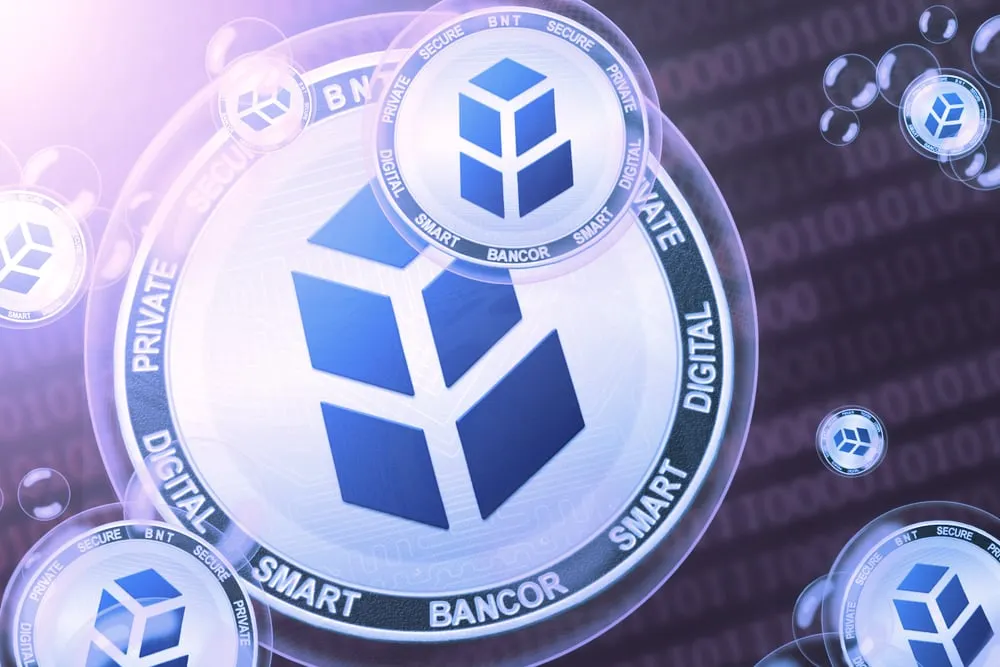Bancor, an early decentralized finance (DeFi) protocol, announced that its much-anticipated protocol update, Bancor 3, is now out of beta and has launched on mainnet, bringing with it a host of new features and improvements.
According to the team, the main goal of Bancor 3 is to create sustainable on-chain liquidity for token projects. The idea is to give participants enough incentives to use the protocol, including auto-compound earnings, dual rewards, and—arguably its most important feature—the ability to instantly receive 100% impermanent loss protection.
In the world of DeFi, impermanent loss happens when a user provides liquidity to a liquidity pool, and the ratio of their deposited assets changes at a later point potentially leaving investors with more of the lower value token. This can be a rather painful experience as the bigger this change is, the more users are exposed to impermanent loss.
The problem, according to Bancor, is that many DeFi projects seem to ignore the issue, “just brushing it under the carpet.” Ultimately, this results in inaccurate APR (annual rate of return expressed in percentages) numbers reported by some protocols.
“Many token holders have learned a hard lesson that the APR figures they see do not include impermanent loss; rather, they just see fees over liquidity. But that assumes that liquidity stays the same over time,” Mark Richardson, product architect at Bancor told Decrypt.
To get true APR, Richardson explained, you must take transaction fees, minus impermanent loss over liquidity.
“As more token holders have started to realize that the APR that they see going in is not what they eventually get out, they have started to pull back from staking inside liquidity pools. This is bad for trust, it’s bad for liquidity and it’s bad for the development of DeFi,” he added.
According to Richardson, to build truly sustainable decentralized liquidity markets, a “broad, sustainable involvement in liquidity pools, with a diversity of participants (not just sophisticated market-making firms)” is needed.
How Impermanent Loss Protection works
As Richardson explained to Decrypt, Bancor’s Impermanent Loss Protection (ILP) features imposes a cost on the protocol, similar to the insurance cost incurred by an insurance company. This cost is offset in two ways.
First, ILP is funded by Bancor’s protocol-owned liquidity: the protocol stakes its native token BNT in its pools and uses the earned fees to compensate users for any impermanent loss. When earned trading fees are greater than the cost of impermanent loss on a given stake, the protocol is effectively burning excess BNT.
“Since last June, BNT has been in a gradual deflationary trend, meaning the protocol is able to reduce the BNT supply while fully protecting LPs via protocol-earned fees,” said Richardson.
The other mechanism for funding Bancor’s ILP is a protocol-wide fee that “confiscates” 15% of all trade revenue on the network and uses the collected fees to buy and burn vBNT, Bancor’s governance token, which is generated whenever BNT is deposited in the system by a user.
Bancor released its first version of ILP in 2020 and claims to be the only protocol to date that protects liquidity providers (LPs) from these losses. The mechanism was further improved in Bancor V2 (technically v2.1), but V3 has introduced additional refinements.
“While Bancor version 2.1 also offered impermanent loss protection, it was vested over a 100-day period—meaning an LP needed to be in the pool for 100 days in order to receive 100% protection,” Richardson told Decrypt. “On Bancor 3, LPs get 100% impermanent loss protection instantaneously, from the moment they deposit their tokens.”
More perks for Bancor 3 users
Other incentives for Bancor 3 users include a single-sided auto-compounding model and unlimited single-sided staking.
Single-sided auto-compounding stands in contrast to traditional yield farming programs where rewards must be staked in a separate rewards contract and manually re-staked by a third-party auto-compounder (which extracts a fee) or by the individual LP (who pays gas each time).
Meanwhile, single-sided staking means that users can provide liquidity and earn yield in a single token, without the need to pair 50/50 or buy another asset.
“Bancor has spent the past several years creating the equivalent of a high-yield savings account for DeFi: deposit your assets, sit back and earn. By helping token projects and their users safely and simply tap into DeFi yields, Bancor 3 creates robust and resilient on-chain liquidity markets that drive healthy token economies,” said Richardson.
According to the team, the launch of Bancor 3 has already attracted more than 30 token projects and DAOs including Polygon (MATIC), Synthetix (SNX), Brave (BAT), Flexa (AMP), Yearn (YFI), Enjin (ENJ), WOO Network (WOO) and Nexus Mutual (wNXM).
Each project is either providing seed liquidity on the network or offering liquidity incentives via Bancor’s new auto-compounding rewards system.

